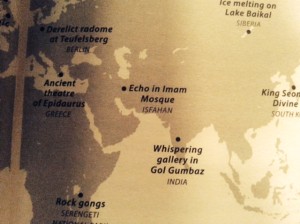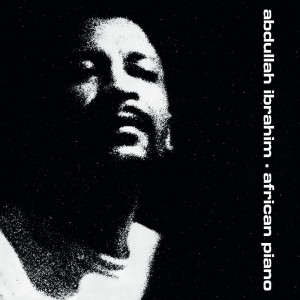Diese Sendung wird etwas „tricky im tracking“. Das Schlüsselstück sollte von dem neuen Bill Callahan-Album kommen. Aber die mp3-Kopie ist von derart schwacher Tonqualität, dass ich es wohl ausfallen lassen muss, wenn Drag City es nicht schafft, mir ein Original zu senden. Bill ist ja im Februar auf Deutschlandtour, und jeder fünfte deutsche Leser dieses Blogs wird schon sein Ticket haben :) Und dann war da noch dieser wunderbare Film gestern im Kino, der von Kritikern gerne verrissen wird, dabei ist The Secret Life of Walter Mitty kluges, anrührendes, vielschichtiges, brilliant inszeniertes Kino, und wohl der erste Film von und vor allem mit dem Komiker Ben Stiller, der mir rundum gefällt. Die Soundtrackabteilung hat ganze Arbeit geleistet, und so erzählen die Songs den Film mit ihren unverbrauchten Melodien gleichsam mit. Ein Oldie ist auch dabei, und wie der inszeniert wurde, gehört für mich zu den schönsten Filmszenen der letzten Zeit. Also, ich hoffe, noch den Soundtrack zu bekommen. Nach dem virtuellen Talk über Tom Waits mit Ian hatte ich unmittelbar Lust, Top of The Hill zu spielen. aber das passt an keiner Stelle, ich sag ja: „tricky tracking“. Und die playlist wird wohl erst Freitag letzte Gestalt annehmen – Überraschung! Am Samstag wird sie dann hier (als Kommentar) gepostet. A ja, und drei Frauenstimmen werden ertönen, nacheinander, wahrscheinlich … zwischen Mülheim a.d. Ruhr und Kingston, Jamaica, ist der Bogen weit gespannnt – und wo war Walter Mitty gleich unterwegs: in Grönland und Island. Gnadenlos gut in einer Gastrolle: Sean Penn. Würde der Altmeister der Tragikomödie, Preston Sturges, im 21. Jahrhundert leben, er hätte diesen Film auch gerne gedreht, das ist die Liga, in der diese „extended version“ einer Kurzgeschichte von James Thurber spielt! Wir haben sie einst im Englischunterricht besprochen.
Archives: Januar 2014
2014 27 Jan.
Die Klanghorizonte am 1. Februar
Michael Engelbrecht | Filed under: Blog | RSS 2.0 | TB | Tags: Bill Callahan, Lee Perry, Tom Waits, Walter Mitty | 3 Comments
2014 26 Jan.
Indiana Jones and The Whispering Gallery in Gol Gumbaz
Manafonistas | Filed under: Blog | RSS 2.0 | TB | Comments off
2014 26 Jan.
Today’s Sunday Morning Record
Michael Engelbrecht | Filed under: Blog | RSS 2.0 | TB | 1 Comment
I couldn’t wait for it when it had been announced, one, two years ago. Someone who had seemed to be vanished for eternities suddenly knocked on my door again. I loved his early 80’s albums, two of them, I loved the one everybody loved, I loved the one only a few people loved. Now he was back again. When I put the music finally on my car cd-player, I liked it immediately, but there were reservations, too. My enthusiasm was, is that the word, restrained. But today, on a cold Sunday morning in my car (s. photography with hidden notation!), I listened again. A bubble above my head: wow! One Day I’m Going To Soar: that’s the name of the album. It took time to realize its class. Kevin Rowland. Dexys. Dexys Midnight Runners. Too Rye Ay. Don’t Stand Me Down.
„An (almost) solo live gig recorded in a Scandinavian jazz club accompanied by much loud eating, drinking and conversation. It’s hard to believe that anyone with a working set of ears would not be completely transfixed by this intense and committed performance – my meatballs would have certainly remained untouched until the last note had faded away. Thankfully, the background noise does not interfere with the listeners enjoyment. I first heard this record 20 years ago and even though I spent several of those years without a copy, the indelible impression left by this blend of South African folk melodies and modern jazz sensibility bound together with a constant muscular, supple rhythmic pulse and an almost tangible spiritual sincerity, has kept it as one of my most beloved of all albums. A „must buy“ for any Dollar Brand fan, along with „Good News From Africa“, the excellent album of duets with bass player (and fellow South African) Johnny Dyani.“ – D.G.R.
Seven ECM albums from the early years, mastered from original analog sources, issued simultaneously in three formats – as 180 gram vinyl albums, as CDs and as high-resolution download files (24 bit/96 kHz), works for orchestra and improvisers, guitar duo, solo piano, and jazz quartet. Out today. One of them is AFRICAN PIANO by Abdullah Ibrahim formerly known as Dollar Brand.
2014 24 Jan.
My favourite 11 Harold Budd albums
Michael Engelbrecht | Filed under: Blog | RSS 2.0 | TB | Tags: Harold Budd | 1 Comment
- 1980 The Plateaux of Mirror (with Brian Eno)
- 1984 The Pearl (with Brian Eno)
- 1996 Luxa
- 1978 The Pavilion of Dreams
- 1994 Through the Hill (with Andy Partridge)
- 2012 Bandits of Stature
- 1984 Abandoned Cities
- 1991 By the Dawn’s Early Light (with Bill Nelson)
- 1995 Glyph (with Hector Zazou)
- 2004 Avalon Sutra / As Long as I Can Hold My Breath
- 2013 Jane 1-11
The „Buddbox“ is a great starting point,
and offers a lot of insights into his work with long portraits and interviews.
A new interview can be found at the end of Ian’s article „My Harold Budd playlist“.
2014 24 Jan.
Paul Bley – acoustic piano and fender rhodes electric piano Bill Connors – acoustic guitar Jimmy Giuffre – alto flute, clarinet
Michael Engelbrecht | Filed under: Blog | RSS 2.0 | TB | 2 Comments
Herzlichen Glückwunsch, wenn Sie dieses Trioalbum besitzen, in knisterndem Vinyl, Sie haben eine Rarität in Händen, ein lang vergriffenes Stück Historie, einen kleinen Meilenstein. Ich bekam diese Platte, wenn ich mich recht entsinne, von Jazz by Post zugeschickt, meinem Pasinger Stammlieferanten für aufregenden Jazz in den 70er und frühen 80er Jahren. Carol Goss hat das Cover mit schneller Hand gezeichnet, in kurzer Zeit den Ideen in ihrem Kopf nur flüchtigen Halt geboten. Paul Bley hatte damals ein eigenes Schallplattenlabel ins Leben gerufen, Improvising Artists Inc. (I.A.I.), in welchem er (naheliegend, weil ohnehin sein Ding) Elemente der ECM-Ästhetik mit der eigenen Lust an poetischer Freigeisterei kurzschloss. Bei diesen Zeilen wird mir die Erinnerung womöglich mehrere Streiche spielen, doch ich müsste mich sehr täuschen, wenn sein Solo-Piano-Album „Alone, Again“ nicht auf I.A.I. erschienen wäre: ganz nah kam es heran an den Zauber seines Klassikers „Open, To Love“ (ECM). Ein Meister der Andeutung, der Pausen, des Ausschwingens einzelner Töne. Auf „Open, To Love“, erzählte er mir früh in den Neunzigern, in einem Bremer Hotel, wollte er (neben allem, wer da eine Rolle spielte, Carla (Bley), Annette (Peacock), ihre Präsenz, ihre Schatten, ihre kargen Kompositionen), die Hüllkurven von elektronischen Sounds auf dem Flügel nachempfinden. Aber zurück zu der Platte, die ich bei Gregor endlich wieder in Händen hielt, und die in einer „pianistischen“ Ausgabe der Klanghorizonte im März auftauchen wird: „Quiet Song“ ist ihr Titel, und Sie sollten, statt jetzt eine Rezension zu erwarten (in der dann Worte auftauchen würden wie „skelettiert“, „leuchtend“, „Gesänge“, aber natürlich auch „Jimmy“ und „Bill“, dessen schönstes Soloalbum „Theme From A Gaurdian“ bitte bald von ECM wieder ans Tageslicht befördert werden möge), sich langsam, aber sicher auf die Suche machen nach dieser Produktion, vorausgesetzt, Sie mögen flüchtige, widerständige Töne!
2014 24 Jan.
Hörerbrief von einem Ex-Surrealisten, betr. Klanghorizonte
Manafonistas | Filed under: Blog | RSS 2.0 | TB | Tags: Exsurrealisten | 2 Comments
Hallo Michael,
nur eine kurze Rückmeldung zu der jüngsten Ausgabe der Klanghorizonte, die für mich auch eine Wiederbegegnung war mit Entdeckungen, die ich in früheren Sendungen von Dir gemacht hab.
„Luxa“ z.B. ist schon seit längerem meine Lieblingsplatte von Harold Budd gewesen. Sehr interessant war von Budds Arbeitsmethoden zu hören (solche Regeln klingen immer vertrauenswürdiger als z.B. Kategorien wie „Inspiration“). Wahrscheinlich hab ich „Luxa“ auch bei Dir zum ersten Mal gehört.
Genauso wie Arthur Russell, dessen „Worlds of Echo“ ich in letzter Zeit wieder gehört hab. Mir gefällt sehr diese etwas spröde und sparsame Kombination von Cello, Gesang und electronics. Jetzt im ersten Stück außerdem Percussion und Bläser zu hören, daran muß ich mich erst mal gewöhnen …
Auch das Stück, das Du von Marsen Jules (eine weitere Klanghorizonte Entdeckung für mich) gespielt hast, war überraschend, nachdem ich auf seiner website eine Vorabveröffentlichung gehört hatte, die mehr auf der melodischen Linie dessen liegt, die ich schon kenne.
Völlig unbekannt war mir die Musik von Simon James Philips, die meiner Vorliebe für minimalistische Klänge sehr entgegen kommt und das besonders, weil sie Pausen lässt (im Gegensatz zu vielem „Zugekleisterten“ bei Phillip Glass etwa). Ich stell mir vor, so ähnlich hätte minimal music von Cage klingen können (na ja, etwas übertrieben, gebe ich zu).
Das Wiederhören von Lieblingsmusik und gleichzeitig die Neugier auf Unbekanntes, dieses Wechselspiel bestimmt naheliegenderweise nicht nur bei mir vieles, was sich um die Leidenschaft für Musik dreht. Beim Hören der Klanghorizonte haben sich dabei über die Jahre so etwas wie Jahresringe von Hörerlebnissen gebildet, die bei jeder neuen Ausgabe sachte mitschwingen und sich dann mit Neuem anreichern und auch umgekehrt.
Ich freu mich also schon, wie immer, auf die nächste Ausgabe.
Liebe Grüße, Frank (Nikol, Anm. d. Manafonistas)
2014 24 Jan.
Manafonista on air (danger! advertisement)
Manafonistas | Filed under: Blog | RSS 2.0 | TB | 7 Comments
Hör-Tipp: poesie[magazin] auf Radio Lora
Live am Freitag, 24.1.2014, 20 bis 21 Uhr.
(Livestream unter siehe Kommentar)
Unter anderem mit einem Block über den von Kurt Drawert herausgegebenen
Band „Kasinostraße 3. 15 Jahre Darmstädter Textwerkstatt“
Poetenladen Verlag, Leipzig 2014, sowie mit einer Lesung von und einem Interview
mit Martina Weber.
Moderation: Kristian Kühn, Armin Steigenberger.
2014 24 Jan.
Schnelle Schreibarbeiten
Henning Bolte | Filed under: Blog | RSS 2.0 | TB | Tags: Han Bennink | 6 Comments
für schnelle schreibarbeiten
füaschnellöschreibarbentein
füschenschleibartein
füschelbeitenschrei
schüttelschreibeifühl
schnee rüffü tiff schrie bei rasch
oschreimschnell fürabeit schriffschrift
so fettich, weck
und bildaguckän blätterlätter noch, ja
und mit VIDEO klar
ah hallowerda
derda
ichhier
2014 23 Jan.
Michael’s Praise of Bill Callahan’s Forthcoming Album by Radically Remixing a Two-Star Review by Joe Sweeney
Michael Engelbrecht | Filed under: Blog | RSS 2.0 | TB | Tags: Bill Callahan | 2 Comments
Whether recording under his own name or, in earlier times, as Smog, Bill Callahan has always been enigmatic, a cowboy philosopher with a booming tenor that could make almost anything sound important. His new project finds him as dreamy as he’s ever been, in the sense that dreams can be confusing, disturbing, pure fun, and kind of mind-expanding. Have Fun with God, a collection of dub remixes of songs from last year’s Dream River, is an intriguing proposition – and fully realized with all its holes and deep-bass pulses that swallow much of the lyrics. A stunning space-country ode to Love And What It All Means, Dream River has the kind of conceptual and sonic depth that can lend itself well to reinterpretation. It creates whole worlds out of a woodblock, some flutes, and a lone murmuring guitar, making Callahan’s talks of romantic epiphany sound like they’re coming from a confessional booth in the ionosphere. It’s ideal fodder for dub. Dream River’s personality comes from the richness of his storytelling and, easy to forget, from the sparse sounds in the surroundings, the ascetic guitar figures, the suggestions of a groove. The ability to create silences is not the only connection with the old Jamaican invention of Dub. When you crank the reverb, delete a lot of the verses, and open the spotlight to the bass and drums, it sounds like a new world that casts valuable shadows on the original material. „Dub is a ghost, a duppy. A duppy of a childhood guppy,“ reads the album’s press release. It’s like an old echo that brings back distant memories and nearly lost vibes. Bill Callahan albums are go-tos for profundity, for mystery, for connection. This little session can easily be misunderstood as a clever joke (and for sure it will get some thumb-down reviews), but it’s far more than the artist’s private playground or a non-sensical exercise for its own sake. It shows that you can dig deep even when most verses are fragmented, suspended in air. You, as the listener, are part of the game, ready for detecting clues, enjoying moments of clearness – and even strolling in the shadows! Bill Callahan’s Dream River is a masterpiece, and this companion album inspires a deeper appreciation of its source material’s beautiful bones, illuminating elements that were hiding in plain sight, like the pretty Fender Rhodes licks on „Ride My Dub.“ If the album ultimately succeeds, it’s because it is a joy to follow this new document of ancient landscapes, old stories and dream texts that deliver new shades of meaning with every listening session (preferably at nighttime), every distant beat of a conga, and every breath they take.



